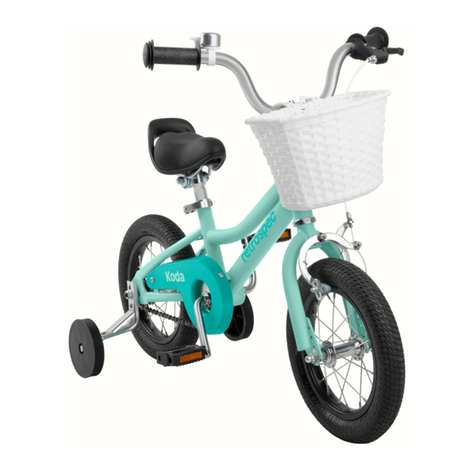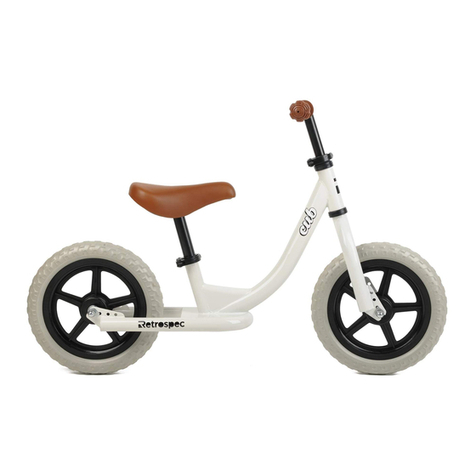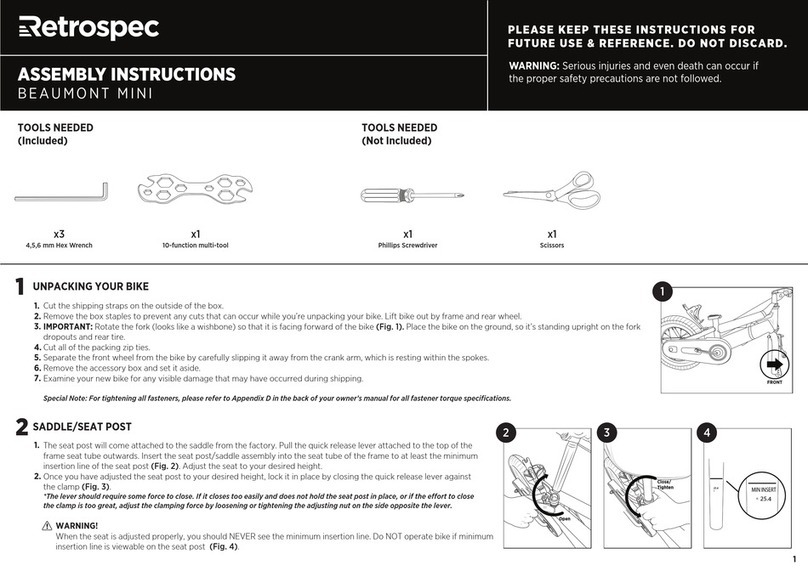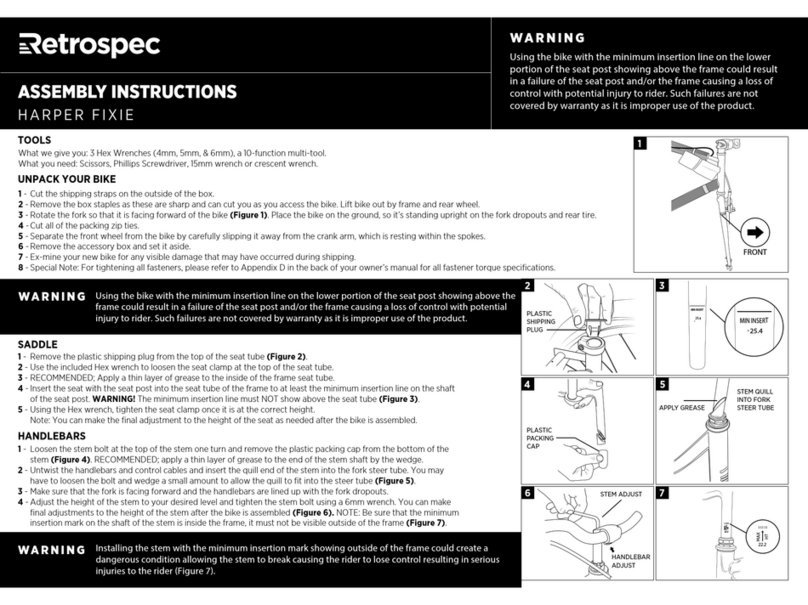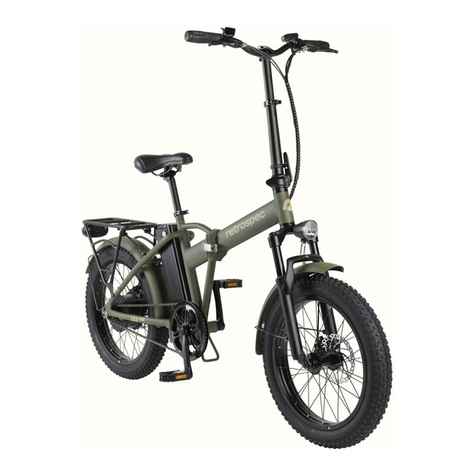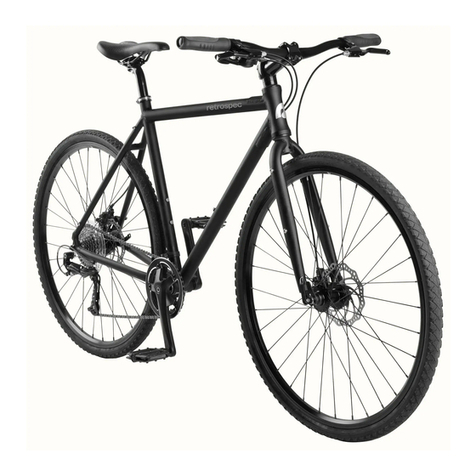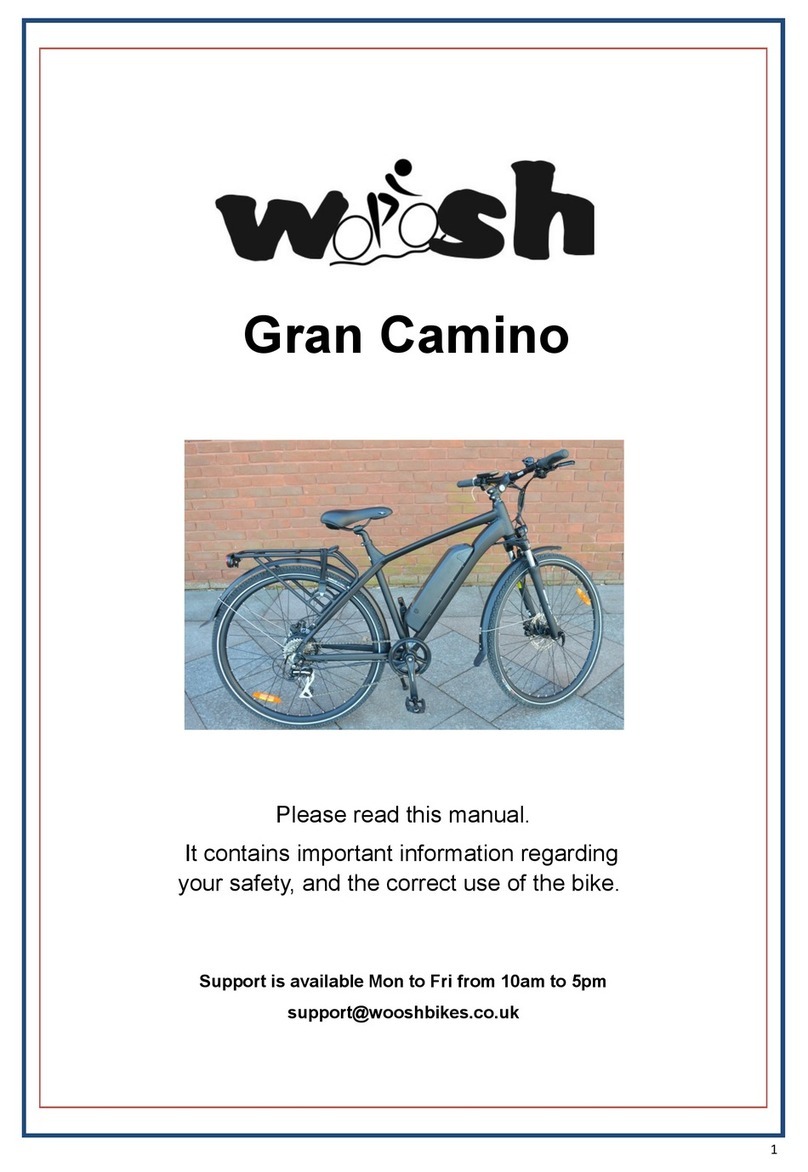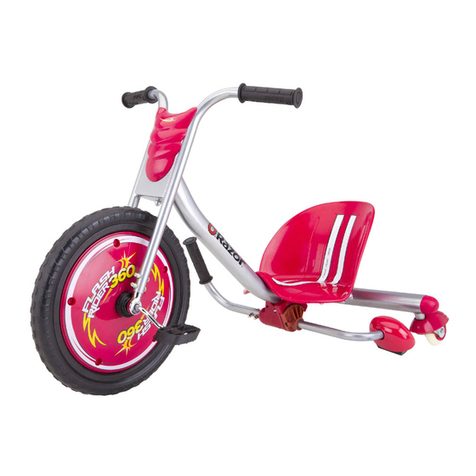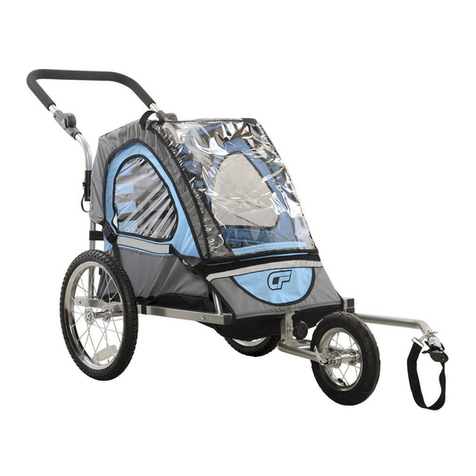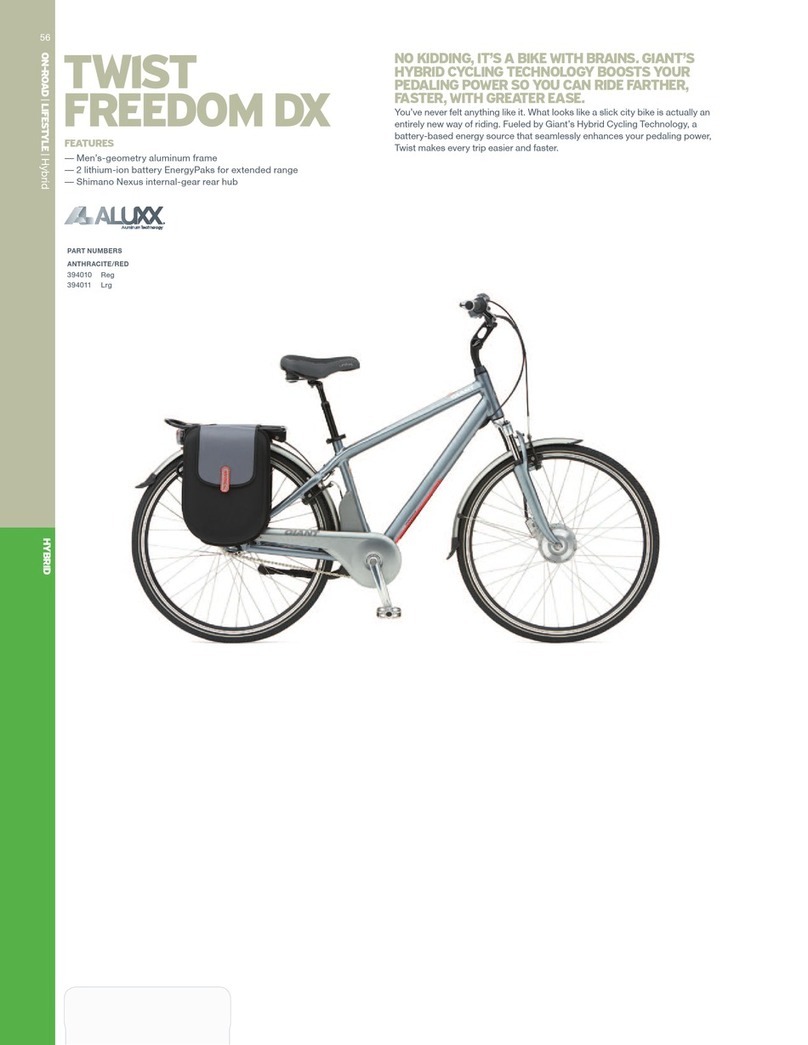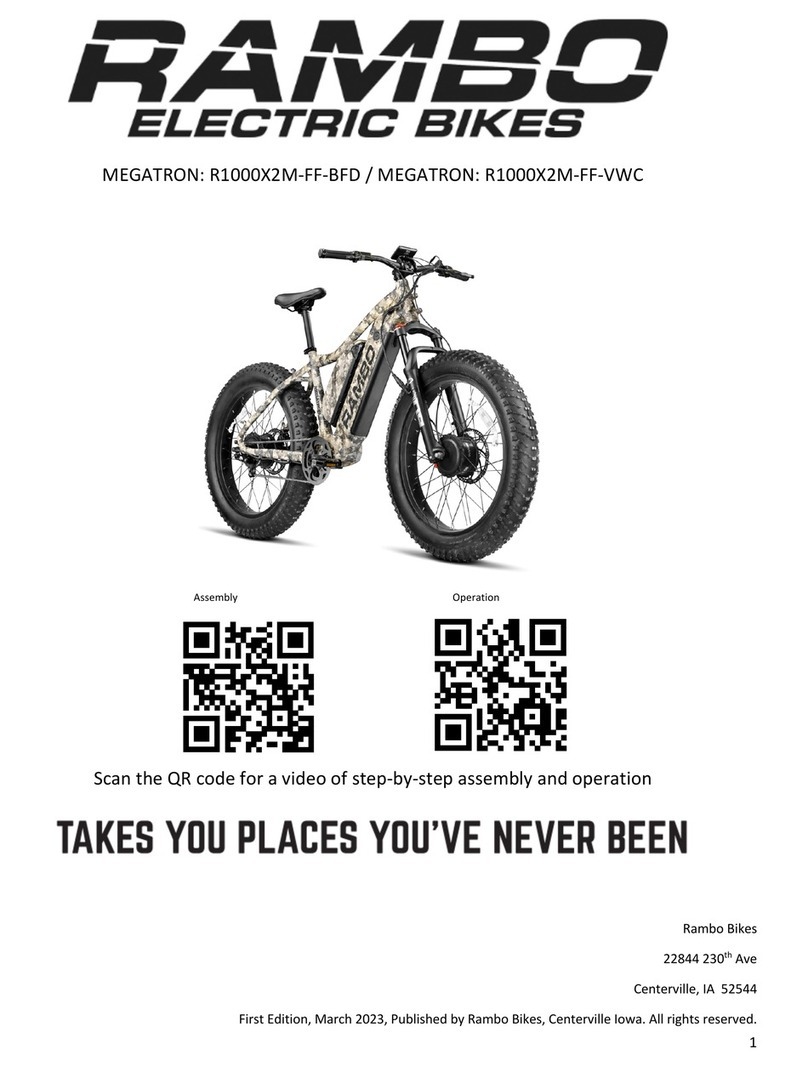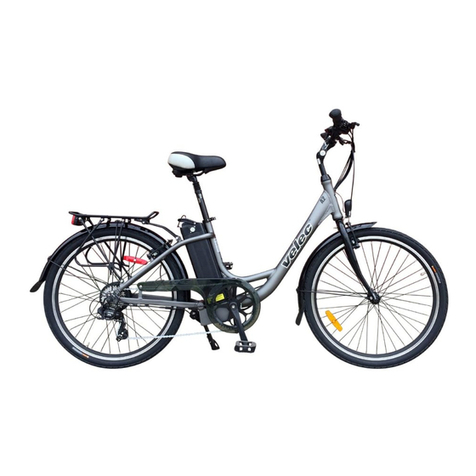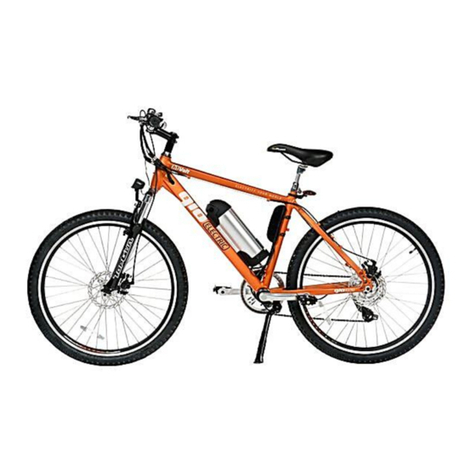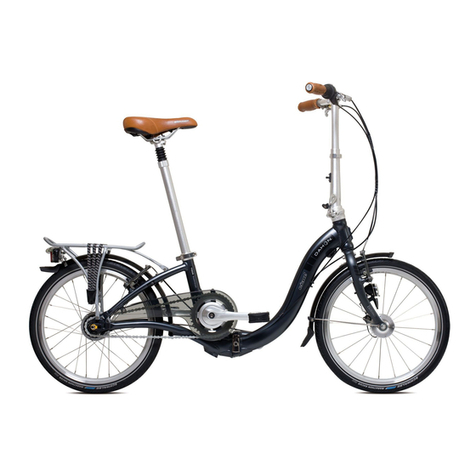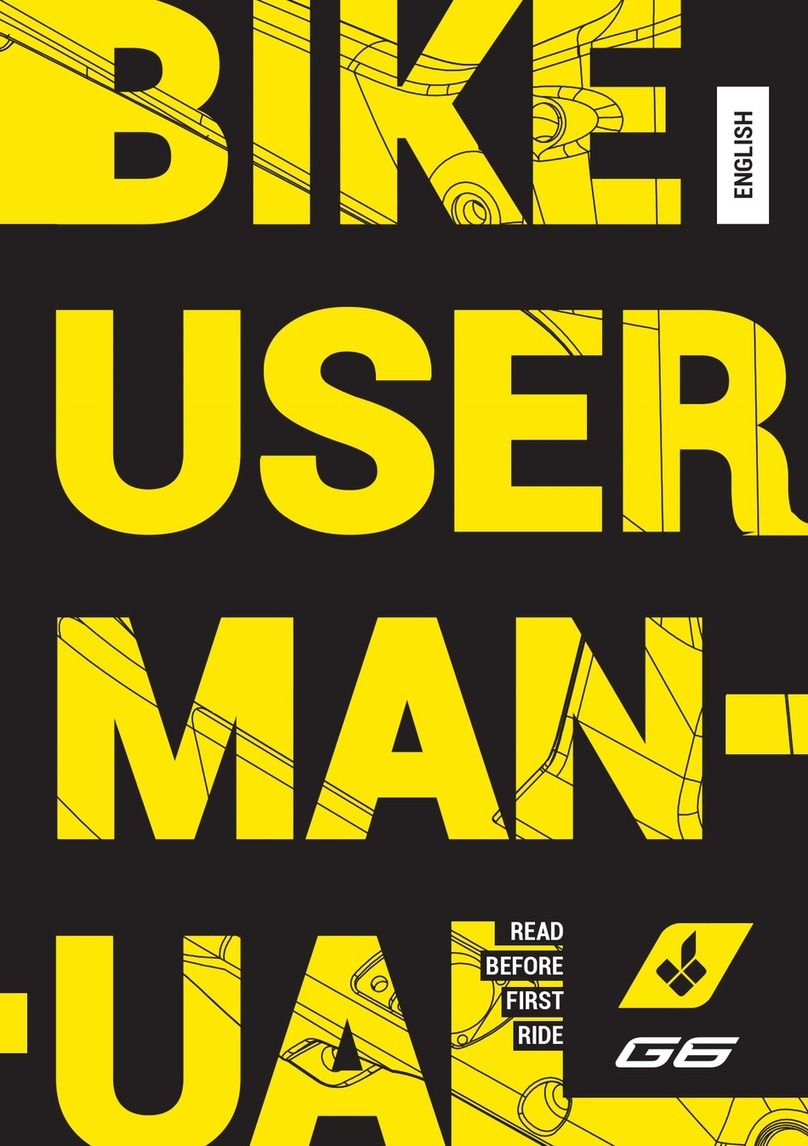
1-
2 -
1-
2 -
CHECK TIRE INFLATION & INSTALLATION:
CHECK HANDLEBAR STEM ALIGNMENT:
* Locate the tire manufacturer’s recommended inflation pressure found on the tire sidewall (listed as “PSI”).
* Using a hand or floor pump with a gauge, begin to inflate the tire to half its recommended inflation pressure and check to see that the tire is properly seated on the rim. Be sure to inspect both sides of
the tire for proper fit.
* If the tire is seated unevenly or bulges out along the rim, let some air out of the tire and reposition the tire by hand so that it sits evenly on the rim.
* Continue to inflate the tire to the manufacturer’s recommended pressure.
* Do not exceed the recommended pressure as this will cause an unsafe condition potentially causing the tire to unexpectedly explode.
* Do not use a compressed air device to inflate your tires as the rapid inflation of the tire can cause it to blow o the rim.
* Tires and tubes are not warranted against damage caused by over-inflation or punctures from road hazards.
Sit on your bike - check to make sure the handlebar stem and fork are in-line with one another.
If it is all good (Fig.20), you are done. Otherwise, do the following.
A– Unfold the handlebar (Fig.17).
B- With 5mm hex wrench loosen the Compression Cap – the top center bolt in the stem (Fig.18).
C– With the same 5mm hex wrench, loosen the two Stem Binder Bolts on side of stem – these hold the stem to the fork. Loosen just enough so you can move/adjust the stem and center it in line
with the front tire (Fig.19).
D– Line up the handlebar/stem with the front tire (Fig.20).
E– Reverse the process:
1. Tightern the top center bolt in the Compression cap of the stem (Fig.18).
2. Tighten the two Stem Binder Bolts on the side of the stem (Fig.19).
To adjust the handlebar height, pull the quick release lever attached to the top of the stem mast outwards and adjust the handlebar to your desired height.
Once you have adjusted the handlebar to your desired height, lock it in place by closing the quick release lever against the clamp (Fig.21).
The lever should require some force to close. If it closes too easily and does not hold the seat post in place, or if the eort to close the clamp is too great,
adjust the clamping force by loosening or tightening the adjusting nut on the side opposite the lever.
IMPORTANT: Never adjust the handlebar height so that the limit line at the lower end of the seat post is showing outside of the frame (Fig.21).
BEFORE YOUR FIRST RIDE
We strongly recommend you take your bike to a professional bike shop and have them check your work and fine tune the bike to ensure your bike is safe
to ride.
SERIAL NUMBER
It is important that you locate and record the serial number of your bicycle in case of a recall or if the bicycle is stolen.
The serial number can be found under the crank bottom bracket stamped into the frame.
Special Note: For tightening all fasteners, please refer to Appendix D in the back of your owner’s manual for all fastener torque specifications.
STEP 6: ADJUST HANDLEBAR HEIGHT
18
17 19
21
20
LIMIT LINE
F
J
1
2
3
4
5
6
7
8
9
1
2
3
COMPRESSION
CAP
STEM BINDER
BOLTS
LIFT BUTTON
PULL OVER
